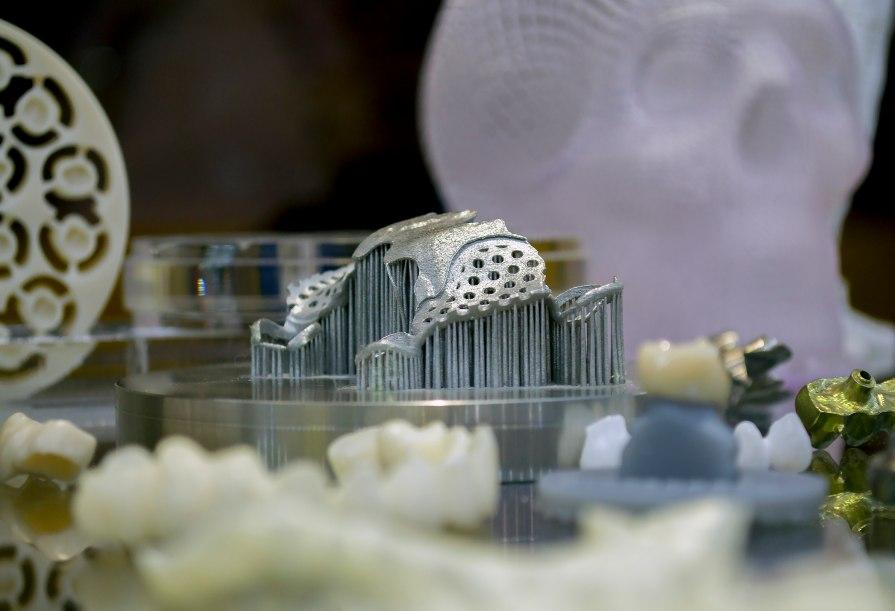- FMA
- The Fabricator
- FABTECH
- Canadian Metalworking
Our Publications
Categories
- Additive Manufacturing
- Aluminum Welding
- Arc Welding
- Assembly and Joining
- Automation and Robotics
- Bending and Forming
- Consumables
- Cutting and Weld Prep
- Electric Vehicles
- En Español
- Finishing
- Hydroforming
- Laser Cutting
- Laser Welding
- Machining
- Manufacturing Software
- Materials Handling
- Metals/Materials
- Oxyfuel Cutting
- Plasma Cutting
- Power Tools
- Punching and Other Holemaking
- Roll Forming
- Safety
- Sawing
- Shearing
- Shop Management
- Testing and Measuring
- Tube and Pipe Fabrication
- Tube and Pipe Production
- Waterjet Cutting
Industry Directory
Webcasts
Podcasts
FAB 40
Advertise
Subscribe
Account Login
Search
3D printing database is designed to be a “game-changer”
- August 9, 2019
- News Release
- Additive Manufacturing
Additively manufacturing industrial end-use components could save manufacturers time and money. But for several reasons, use of the technology has been limited, according to an article posted by EIT Digital, an organization formed to speed Europe’s digital transformation.
A major barrier is that many engineers and designers are unfamiliar with 3D printing, and therefore it’s not easy for them to understand which combination of process, machine, and material to use to print a specific component.
“Automation Support for Additive Manufacturing” is a project aimed at making it easier and faster for businesses to switch from traditional to additive manufacturing. EIT describes the initiative as a “game-changer.”
The project’s partners are Aalto University, Siemens, and DeskArtes.
Aalto University developed a database with up-to-date, relevant data for 3D-printing end-use components. The database contains comprehensive data about machines, materials, mechanical properties, and accuracy levels required to print a specific component, as well as postprocessing steps and other variables, explained Aalto’s activity leader, Niklas Kretzschmar.
“Consequently, this information and their theoretical connections were forwarded to Siemens to create knowledge graphs, linking this data logically with each other,” he said.
The result is an “ontology of additive manufacturing,” taking the form of a software add-on and a plug-in that will be integrated and commercialized by DeskArtes as an extension to its 3D data software.
To use, a designer specifies the size, material, and surface characteristics of a part or uploads the CAD file for it, along with additional information, and automatically receives back all possible 3D printing alternatives.
By way of example, Kretzschmar cited a hypothetical user who wants to investigate “printing a complex industrial component out of a specific metal alloy. The system will tell you which metal additive manufacturing process, machine, and material type would ideally be used to address the user’s demands. In this context, the system additionally provides feedback on certain mandatory postprocessing steps, as well as optional measures that could be beneficial.”
To attain the same results without the database requires in-depth manual research to access all the related data. Because of the complexity of the process, the result is often 3D-printed parts that are too expensive or do not conform to specs.
The system, which will be sold to manufacturing, systems-development, and service companies, is in the pilot testing phase with three companies. It is scheduled to be available for purchase by the end of 2019.
- Podcasting
- Podcast:
- The Fabricator Podcast
- Published:
- 04/16/2024
- Running Time:
- 63:29
In this episode of The Fabricator Podcast, Caleb Chamberlain, co-founder and CEO of OSH Cut, discusses his company’s...
- Trending Articles
- Industry Events
16th Annual Safety Conference
- April 30 - May 1, 2024
- Elgin,
Pipe and Tube Conference
- May 21 - 22, 2024
- Omaha, NE
World-Class Roll Forming Workshop
- June 5 - 6, 2024
- Louisville, KY
Advanced Laser Application Workshop
- June 25 - 27, 2024
- Novi, MI

























